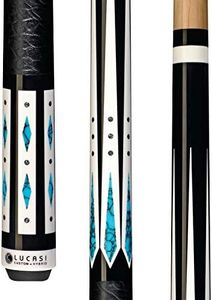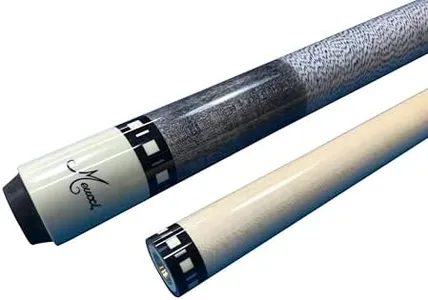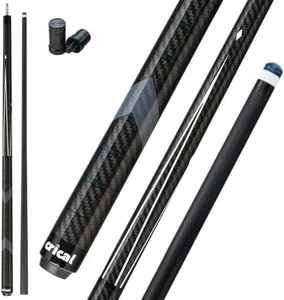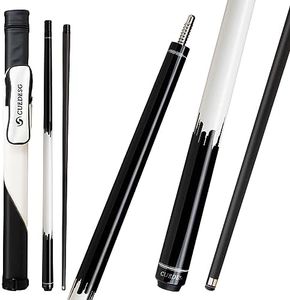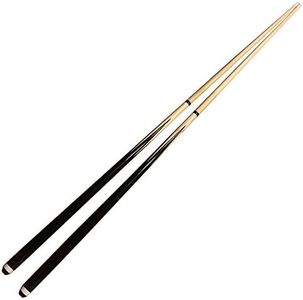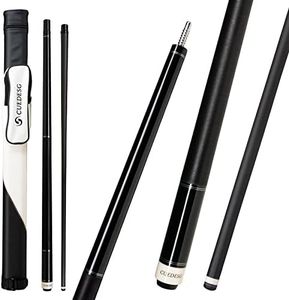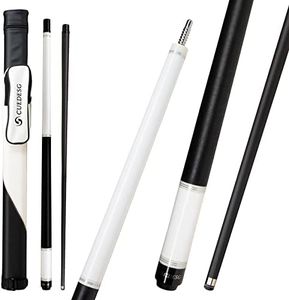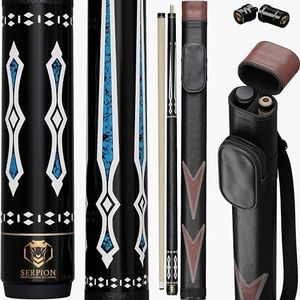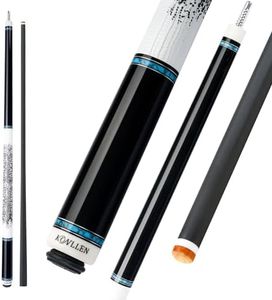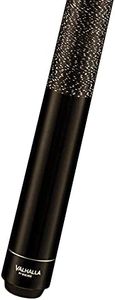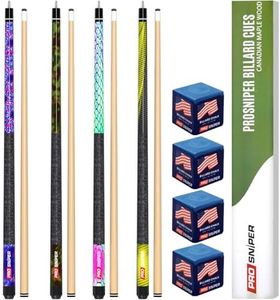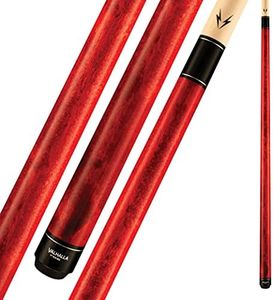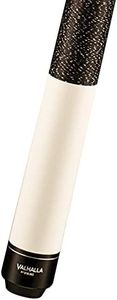We Use CookiesWe use cookies to enhance the security, performance,
functionality and for analytical and promotional activities. By continuing to browse this site you
are agreeing to our privacy policy
10 Best Pool Sticks
From leading brands and best sellers available on the web.Buying Guide for the Best Pool Sticks
Choosing the right pool stick, also known as a cue, can significantly improve your playing experience and help you perform at your best. Understanding the important specifications will help you pick a cue that matches your playing style, comfort level, and skill. By paying attention to these details, you'll be able to find a pool stick that feels right in your hands and complements the way you play, whether you're a casual player or aiming to improve your skills more seriously.LengthLength refers to how long the pool stick is from end to end. Most cues are about 57-59 inches long, which fits most adult players. This spec is important because the correct length ensures you can comfortably make shots without stretching too much or feeling crowded. Shorter cues (below 57 inches) are good for younger players, people with smaller frames, or in tight spaces. Standard length is ideal for most adults, providing a balanced feel. If you're much taller or have a specific stance, slightly longer cues might work better. The right length is the one that allows you to stand naturally and control your stroke easily, so consider your height, arm reach, and the space where you’ll be playing.
WeightWeight is how heavy the pool stick feels in your hand, typically measured in ounces, usually between 17 and 21 ounces. The weight affects how you control power and accuracy. Lighter cues (17-18 ounces) are easier to control for finesse shots and are suitable for kids or beginners. Medium-weight cues (about 19 ounces) are the most popular and balance power with control, making them great for a variety of players. Heavier cues (20-21 ounces) help deliver powerful shots or break shots but may feel harder to manage for some. When choosing weight, think about your build, how the cue feels after several games, and whether you prefer speed over power or vice versa. Try out a few different weights to see which one feels most effortless yet stable in your hand.
Tip HardnessThe tip is the small end part of the stick that actually strikes the ball, and tip hardness can range from soft to hard. Hard tips last longer, produce a more direct hit, and work well for powerful breaks or straight shots. Soft tips give more grip on the cue ball and better control for spin (English), but wear out faster. Medium tips aim to blend durability with control. If you’re a beginner, a medium tip is a safe and versatile choice. Choose softer tips if you like using a lot of spin and don’t mind replacing tips occasionally. Go for harder tips if you’re aiming for consistent power and less maintenance.
Shaft MaterialMost pool stick shafts are made from hard rock maple, but some feature alternative materials like fiberglass or carbon fiber, which can change the feel and durability. Maple offers a classic, slightly flexible feel, while fiberglass or carbon fiber cues are less likely to warp and often feel stiffer. If you want a traditional look and touch, maple is your go-to. For rough environments, or if you tend to play a lot and want low maintenance, synthetic options might be best. The choice should fit your comfort and whether you prioritize classic play or durability.
Wrap/GripThe grip or wrap is the section of the cue you hold; it can be made from linen, leather, rubber, or simply be a smooth, untreated wood finish. Linen wraps absorb moisture and provide a secure hold without stickiness, leather feels luxurious and offers grip, while rubber wraps maximize traction for sweaty hands. A cue without a wrap gives a smooth, direct feel but might slip if your hands sweat. If your hands stay dry or you prefer a sleek design, no wrap is comfortable. Choose a wrap based on how much grip you need and whether you tend to get sweaty palms during play.
Joint TypeThe joint is where the cue breaks apart for storage or transport, and it can affect the way the cue feels when striking. Metal joints generally create a solid, firm hit, while wood-to-wood joints feel softer and more flexible. Some joints are quick-release, making it fast and easy to assemble or disassemble your cue. Pick a joint based on whether you prioritize quick set-up and a certain type of feedback during play. If possible, try both types to see which feels more natural when shooting.
